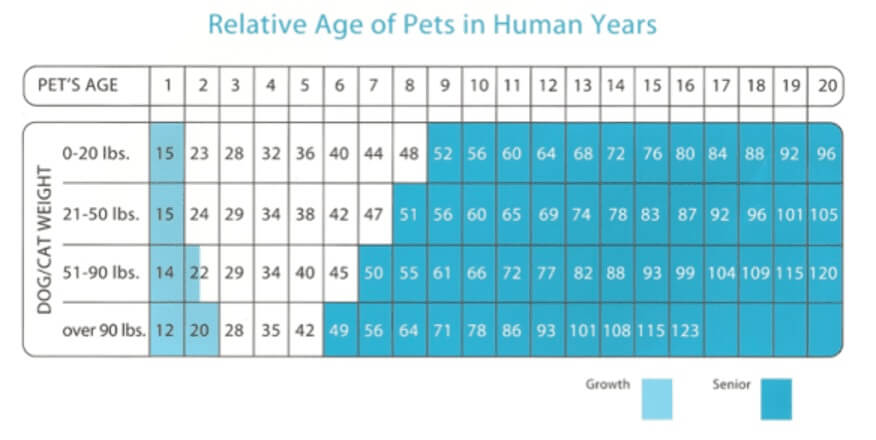
A touch of gray on the chin or around the muzzle; once-clear eyes becoming a little cloudy. A slight stiffness in what used to be a frisky gait. Any of these can be telltale signs that your furry friend is entering the “golden” years.
Due to improved veterinary care and dietary habits, pets are living longer now than they ever have before. One consequence of this is that pets, along with their owners and veterinarians, are faced with a whole new set of age-related conditions. In recent years there has been extensive research on the problems facing older pets and how their owners and veterinarians can best handle their special needs.
The old adage that every year in a pet’s life is equivalent to seven “human” years isn’t quite accurate. Pets mature more rapidly during the first two years of life, and then again during the final third of their life span. In dogs, this varies with the size and breed of the dog. For instance, smaller dogs tend to have longer life spans than giant-breed pets. A giant-breed dog as young as six years of age may be considered a “senior,” while cats and small-breed dog do not reach senior status until 9 years of age. Other factors affecting how individual pets age include body condition, nutrition, environment, and overall health.
Why is it important to know when your pet becomes a senior? Pets are living longer than ever, thanks to advances in veterinary care and improved nutrition, providing their owners with many more years of love and faithful companionship. The trade-off, however, is that senior pets, just like their aging human companions, become more vulnerable to multiple health problems and diseases such as weight gain and decreased mobility; heart, kidney, and liver diseases; diabetes; dental problems and periodontal disease; behavioral problems and cancer. Pets don’t show signs of many illnesses until very late in the disease process. Catching early signs of illness allows veterinarians to make recommendations for your pet that can add years to their life. Once your dog has reached senior status, twice a-year senior preventive care examinations may be recommended as the standard of care. Ask us how our Preventive Care programs can make your pet’s golden years happy and healthy!




